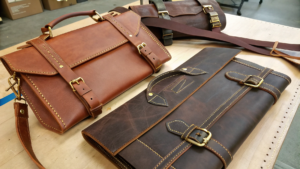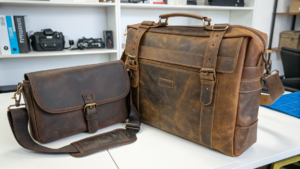Why a Canvas Bag is Your Ideal Companion for Intentional Travel
Are you navigating the complex world of travel bags? Forget the high-tech. The humble canvas bag is making a powerful comeback.
A canvas bag is your ideal companion for intentional travel because it offers a timeless blend of durability, simplicity, and sustainable style, supporting a philosophy of packing light, moving freely, and embracing genuine character over fleeting trends.
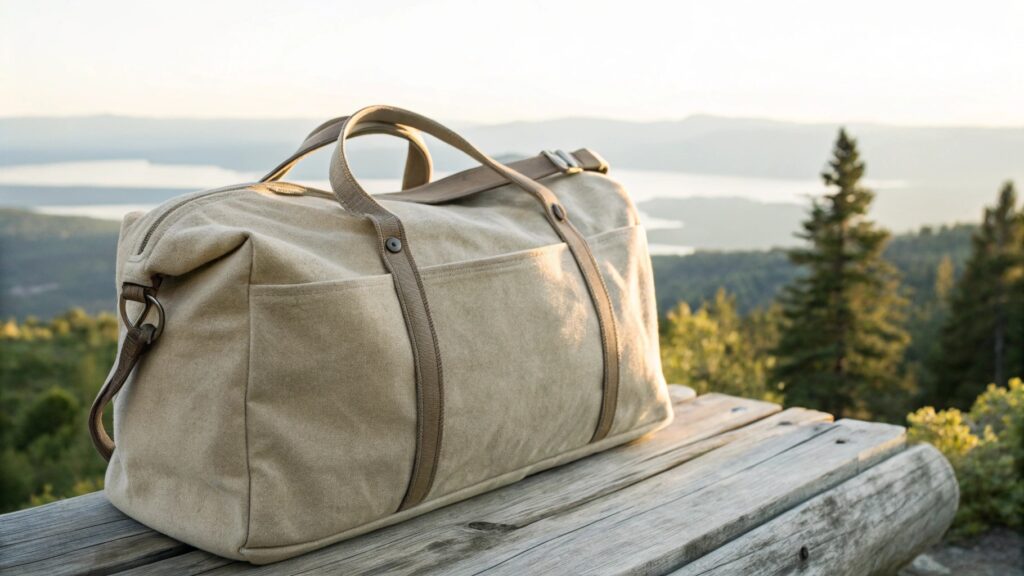
I've learned that a canvas bag doesn't try to impress. It just performs. It truly gets better with age, developing a unique character that no other material can replicate.
Are canvas bags good or bad?
Are you weighing the pros and cons of canvas bags? They have unique qualities that make them neither wholly good nor bad, but rather suitable for specific needs.
Canvas bags are generally considered good due to their durability, natural aesthetic, and eco-friendliness, but they can be considered less ideal in situations requiring extreme water resistance, very light weight, or highly structured protection.
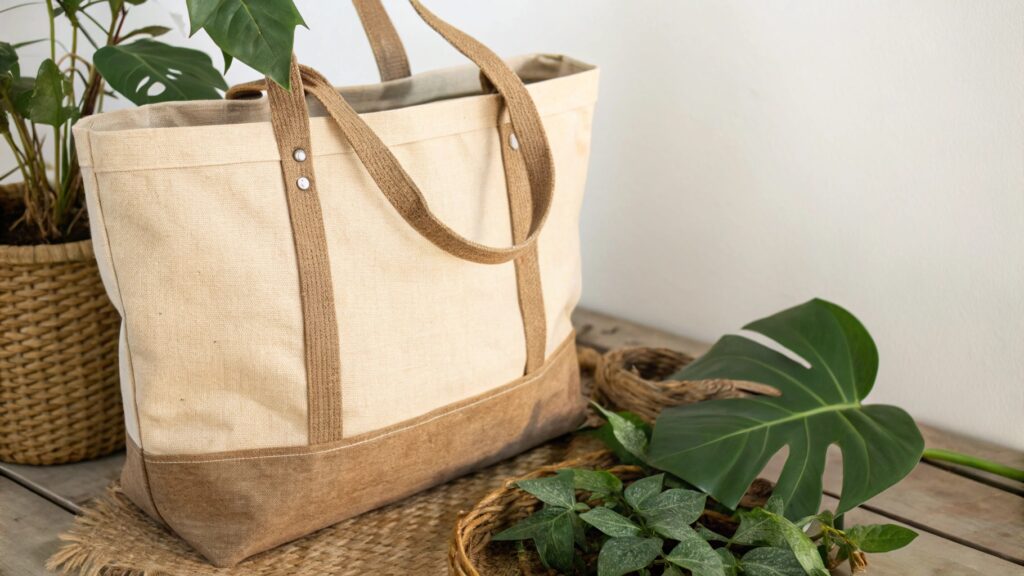
Why are canvas bags durable?
Canvas bags are incredibly durable. They are made from tightly woven cotton or linen fabric. This weave makes the material strong and resistant to tearing. Canvas is known for its ability to withstand heavy use and harsh conditions. Unlike many synthetic materials, canvas actually develops more character as it ages and shows wear. That kind of honest wear-and-tear is something no nylon duffel can fake. Many canvas bags1 are also treated with wax or other coatings, which further enhances their durability and water resistance. I appreciate how a well-made canvas bag can truly last for years, becoming a reliable companion for countless journeys. This inherent robustness makes canvas a top choice for longevity and reliability in bags.
| Feature | Canvas Bags (Pros) | Canvas Bags (Cons) |
|---|---|---|
| Durability | Highly durable, long-lasting, develops character | Can be heavy when wet, susceptible to stains |
| Aesthetics | Natural, timeless, classic, versatile | Less sleek/modern than some synthetics |
| Sustainability | Natural fibers, biodegradable (if untreated) | Water-intensive to produce (cotton), can be heavy |
| Water Resistance | Low (unless waxed/treated) | Absorbs water, takes long to dry |
| Weight | Can be heavier than synthetic options | Adds to overall pack weight, especially when wet |
| Price | Varies; can be affordable or high-end | Mid-range to high, depending on quality/brand |
How do aesthetics play a role?
The aesthetics2 of canvas bags play a significant role in their appeal. They have a natural, timeless look that often feels authentic and unpretentious. The earthy texture and classic weave give them a versatile style that can blend in anywhere, from bustling city streets to rugged trails. This allows a canvas bag to fit into various travel scenarios without looking out of place. This visual appeal is a key reason for their enduring popularity. I find that a canvas bag speaks to a sense of adventure and simplicity, which resonates with my own travel philosophy. It offers a subtle statement of character that transcends fleeting fashion trends.
Can canvas bags be eco-friendly?
Yes, canvas bags can be very eco-friendly. Canvas is typically made from natural fibers, primarily cotton or linen. When sourced from organic cotton, it's produced with less water and fewer pesticides. Unlike petroleum-based synthetic materials (like nylon or polyester), canvas is biodegradable when it finally reaches the end of its life. This makes it a more sustainable choice for environmentally conscious travelers. Choosing a canvas bag is a step towards slow fashion, investing in durable items that last for years rather than contributing to disposable trends. I value this aspect highly. It offers a guilt-free alternative for reducing one's environmental footprint while traveling.
What are the disadvantages of canvas bags?
While canvas bags offer many benefits, they also have some drawbacks. Understanding these helps you choose the right bag for your trip.
The main disadvantages of canvas bags include their susceptibility to water absorption3 (unless treated), heavier weight compared to synthetic alternatives, potential for staining, and less structured protection for fragile contents.
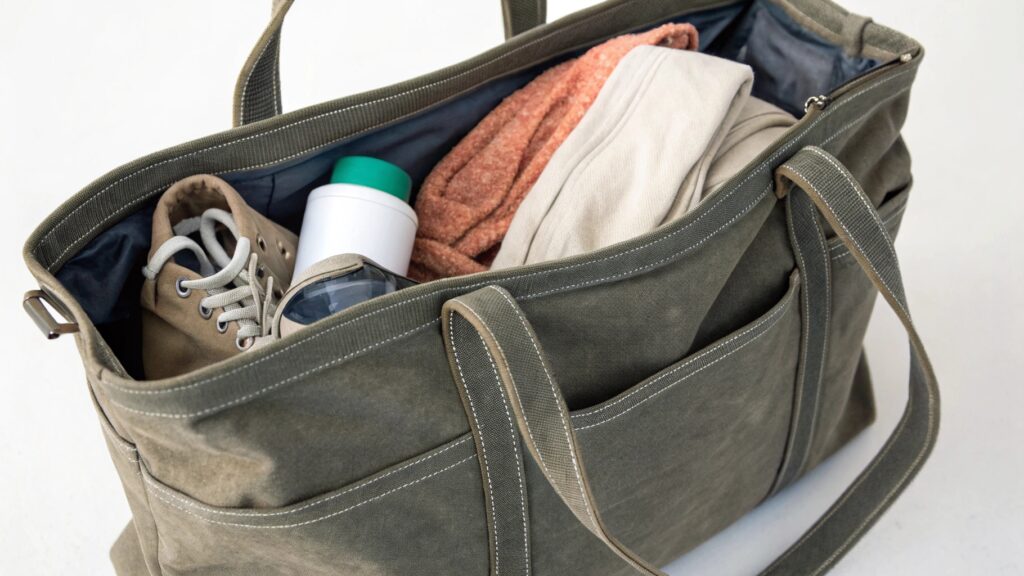
Why is water absorption a concern?
Water absorption is a significant concern for canvas bags if they are not treated. Untreated canvas is not naturally waterproof. If caught in heavy rain, the bag can soak up water. This makes it very heavy. It can also lead to the contents inside getting wet. It takes a long time for wet canvas to dry. This can be a problem in humid climates or when you need to pack quickly. While some canvas bags are waxed or treated to be water-resistant, this adds to the cost and can change the fabric's feel. I always consider the weather conditions of my destination. For very wet environments, a synthetic, waterproof bag might be a better choice. This vulnerability to moisture can lead to uncomfortable carrying and potential damage to your belongings, making it a critical factor in selection.
| Disadvantage | Impact on Travel | Mitigation / Workaround |
|---|---|---|
| Water Absorption | Bag becomes heavy, contents get wet, slow to dry | Choose waxed canvas, use rain cover, pack contents in dry bags. |
| Heavier Weight | Adds to overall luggage weight, more effort to carry | Pack lighter, choose thinner canvas, consider short trips. |
| Staining | Permanent marks from dirt, spills | Choose darker colors, spot clean immediately, embrace the "worn" look. |
| Lack of Structure | Contents can shift, less protection for fragile items | Use packing cubes, choose bags with internal compartments/padding. |
| Slower Drying Time | Inconvenient in humid climates or quick turnarounds | Air out thoroughly, use quick-drying internal bags. |
How does weight affect travel?
The weight of canvas bags can affect travel, especially for longer journeys or flights with strict baggage limits. Canvas is generally heavier than common synthetic materials like nylon or polyester, especially when the fabric is thick or reinforced. This extra weight can add to your overall luggage weight. It might mean you have to pack less. It could also lead to additional fees if you exceed airline weight limits. For travelers who prioritize carrying as little as possible, or who need to move quickly, this added weight can be a drawback. I sometimes opt for a lighter synthetic bag if I know every ounce counts for my trip. This trade-off between durability and portability is a common consideration for optimizing travel efficiency.
Can canvas bags be easily stained?
Yes, canvas bags can be more easily stained than some other materials. Because canvas is often a natural, absorbent fiber, spills or dirt can penetrate the fabric more readily. Light-colored canvas is particularly susceptible to showing marks. While some stains can be spot cleaned, others might be harder to remove completely. For many, the "worn" look of a stained canvas bag adds to its character. But for those who prefer a pristine appearance, this can be a disadvantage. I find that embracing the patina of a canvas bag is part of its charm, but it's something to be aware of if you expect your bag to always look new.
Which is the best material for travel bags?
Are you trying to decide on the best material for your travel bag? There's no single "best." It depends on your travel style and needs.
The best material for travel bags depends on individual priorities: canvas for durability and classic style, nylon for lightweight and water resistance, polyester for affordability and versatility, and leather for premium aesthetics and longevity, each suiting different travel philosophies.
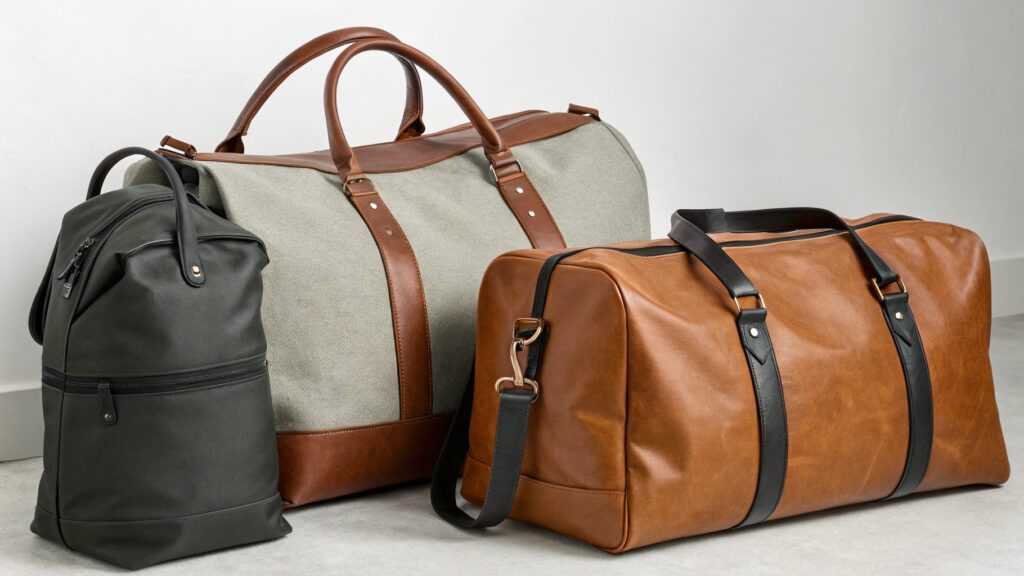
Why is nylon popular for travel bags?
Nylon is extremely popular for travel bags because of its excellent combination of being lightweight and water-resistant. It's a synthetic material that's strong and durable. It sheds water effectively, making it a great choice for rainy climates or protecting contents from spills. Nylon bags are also often very packable and can be folded down when empty. They come in a wide range of colors and styles. For travelers who prioritize minimal weight and protection from the elements, nylon is a top choice. I often choose nylon for quick trips or when I anticipate unpredictable weather. It's practical and reliable. This material's hydrophobic properties and high strength-to-weight ratio make it ideal for adventurous travel and situations requiring minimal bulk.
| Material Type | Pros | Cons | Best Suited For |
|---|---|---|---|
| Canvas | Durable, natural look, develops character | Heavier, less water-resistant (untreated), prone to staining | Classic style, intentional travel, durability |
| Nylon | Lightweight, water-resistant, durable, packable | Can look less premium, not biodegradable | Backpacking, wet climates, minimalist packing |
| Polyester | Affordable, versatile, good color retention | Less durable than nylon/canvas, can look cheap | Budget-friendly, general travel, casual use |
| Leather | Premium look, very durable, ages beautifully | Heavy, expensive, requires maintenance, not water-resistant | Luxury travel, business, heirloom quality |
| Polycarbonate (Hard-shell) | Excellent protection, lightweight (for hardside) | Can scratch easily, not flexible, often expensive | Checked luggage, fragile contents |
When is polyester a good choice?
Polyester is a good choice for travel bags when affordability and versatility are key. It's a widely used synthetic fabric, similar to nylon but often less expensive. Polyester is also durable. It resists wrinkles. It holds color well. It's a good option for general-purpose travel bags, casual luggage, or promotional items. While it might not be as lightweight or as water-resistant as nylon, it offers a great balance of features for its price point. It's a practical option for travelers who need a functional bag without a significant investment. I consider polyester a reliable workhorse for everyday travel needs.
What are the benefits of leather for travel bags?
Leather offers unique benefits for travel bags: a premium look, exceptional durability, and the ability to age beautifully. A well-made leather bag can last a lifetime. It develops a rich patina over time that tells a story of its journeys. Leather bags exude sophistication and timeless style. They are often chosen for business travel or luxury trips. However, leather is heavy, expensive, and requires more maintenance than synthetic materials. It is also not inherently waterproof. For those who value aesthetics, heirloom quality, and are willing to invest, leather is an unparalleled choice. I admire the character and longevity of a good leather bag, making it a statement piece for the discerning traveler.
Conclusion
Your canvas bag is a deliberate choice for travel. It's about honesty, simplicity, and a richer journey. Sometimes, the simplest gear brings the most profound experiences.
-
Explore the benefits of canvas bags, including their durability and eco-friendliness, to make an informed choice for your next purchase. ↩
-
Discover how the aesthetics of canvas bags contribute to their popularity and versatility, making them a stylish choice for various occasions. ↩
-
Understanding water absorption in canvas bags can help you choose the right bag for wet conditions and avoid potential issues during travel. ↩



